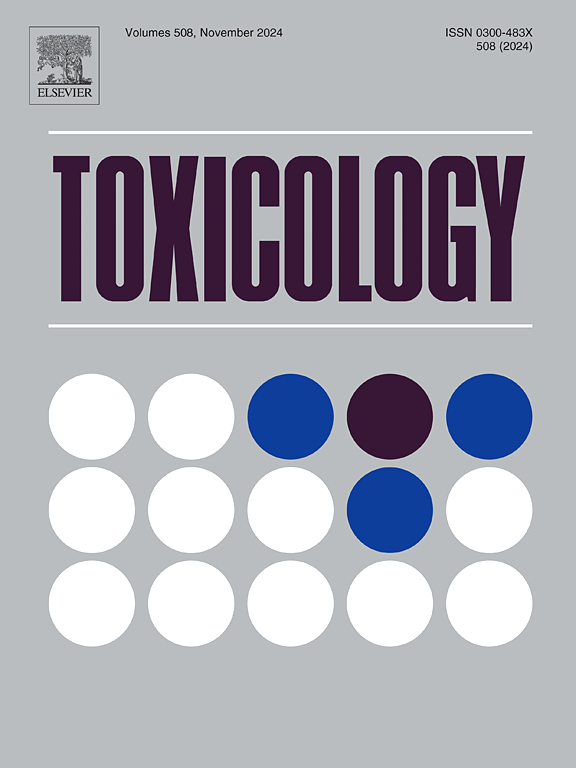环境中的电子废物:揭示来源、致癌联系和可持续管理战略。
IF 4.8
3区 医学
Q1 PHARMACOLOGY & PHARMACY
引用次数: 0
摘要
电子废物指的是在没有再利用意图的情况下选择丢弃或在其功能寿命结束时丢弃的电气和电子设备。2022 年,全球产生的电子垃圾约为 620 亿公斤,相当于人均 7.8 公斤。随着每年约 200 万公吨的惊人增长,到 2030 年,电子废物产量可能超过 820 亿公斤。电子垃圾的不当处置会损害人类健康和整个生物圈。电子垃圾包含多种化学物质,包括重金属、多氯联苯 (PCB)、全氟和多氟烷基物质 (PFAS)、多环芳香烃 (PAH)、多氯二苯并对二恶英和呋喃 (PCDD/Fs)、多溴联苯醚 (PBDE) 和放射性元素。电子废物设备的不当处置会直接污染水生和陆地环境,导致人类通过摄入、吸入、皮肤吸收和经胎盘转移等方式接触这些污染物。这些污染物可从环境中直接进入人体,通过调节细胞周期蛋白、诱导氧化应激和突变,有可能助长癌变。镉、汞、砷、铅、铬和镍等重金属,以及多环芳烃、多氯联苯、多溴联苯醚、全氟醚和放射性元素等有机污染物,在诱发人类恶性肿瘤方面发挥着至关重要的作用。有效的收集、分类、适当的回收和适当的处置技术对于减少电子废物衍生化学物质对环境的污染至关重要。因此,本综述旨在揭示电子废物对全球环境造成的负担及其与人类致癌的联系。此外,它还对潜在的处理方法进行了全面讨论,以最大限度地减少电子废物对环境的污染。本文章由计算机程序翻译,如有差异,请以英文原文为准。
E-waste in the environment: Unveiling the sources, carcinogenic links, and sustainable management strategies
E-waste refers to the electrical and electronic equipment discarded without the intent of reuse or at the end of its functional lifespan. In 2022, approximately 62 billion kg of e-waste, equivalent to 7.8 kg per capita, was generated globally. With an alarming annual growth of approximately 2 million metric tonnes, e-waste production may exceed 82 billion kg by 2030. Improper disposal of e-waste can be detrimental to human health and the entire biosphere. E-waste encompasses a wide range of materials, including heavy metals, Polychlorinated Biphenyls (PCBs), Per- and Polyfluoroalkyl Substances (PFAS), Polycyclic Aromatic Hydrocarbons (PAHs), Polychlorinated Dibenzo-dioxins and -furans (PCDD/Fs), Polybrominated Diphenyl Ethers (PBDEs), and radioactive elements. E-waste, when disposed inappropriately can directly contaminate the aquatic and terrestrial environment, leading to human exposure through ingestion, inhalation, dermal absorption, and trans-placental transfer. These detrimental contaminants can directly enter the human body from the environment and may fuel carcinogenesis by modulating cell cycle proteins, redox homeostasis, and mutations. Heavy metals such as cadmium, mercury, arsenic, lead, chromium, and nickel, along with organic pollutants like PAHs, PCBs, PBDEs, PFAS, and radioactive elements, play a crucial role in inducing malignancy. Effective collection, sorting, proper recycling, and appropriate disposal techniques are essential to reduce environmental contamination with e-waste-derived chemicals. Hence, this comprehensive review aims to unravel the global environmental burden of e-waste and its links to carcinogenesis in humans. Furthermore, it provides an inclusive discussion on potential treatment approaches to minimize environmental e-waste contamination.
求助全文
通过发布文献求助,成功后即可免费获取论文全文。
去求助
来源期刊

Toxicology
医学-毒理学
CiteScore
7.80
自引率
4.40%
发文量
222
审稿时长
23 days
期刊介绍:
Toxicology is an international, peer-reviewed journal that publishes only the highest quality original scientific research and critical reviews describing hypothesis-based investigations into mechanisms of toxicity associated with exposures to xenobiotic chemicals, particularly as it relates to human health. In this respect "mechanisms" is defined on both the macro (e.g. physiological, biological, kinetic, species, sex, etc.) and molecular (genomic, transcriptomic, metabolic, etc.) scale. Emphasis is placed on findings that identify novel hazards and that can be extrapolated to exposures and mechanisms that are relevant to estimating human risk. Toxicology also publishes brief communications, personal commentaries and opinion articles, as well as concise expert reviews on contemporary topics. All research and review articles published in Toxicology are subject to rigorous peer review. Authors are asked to contact the Editor-in-Chief prior to submitting review articles or commentaries for consideration for publication in Toxicology.
 求助内容:
求助内容: 应助结果提醒方式:
应助结果提醒方式:


